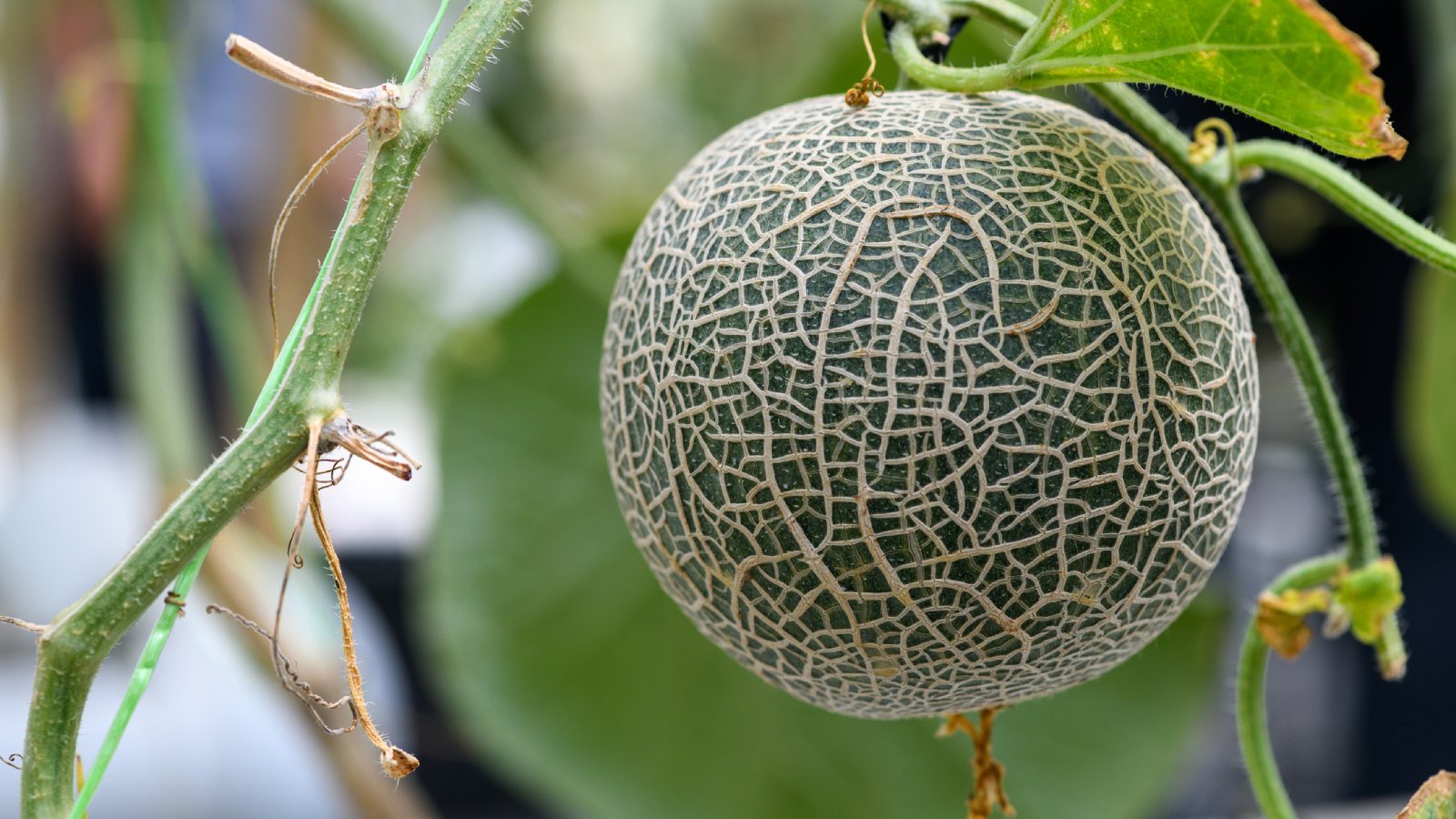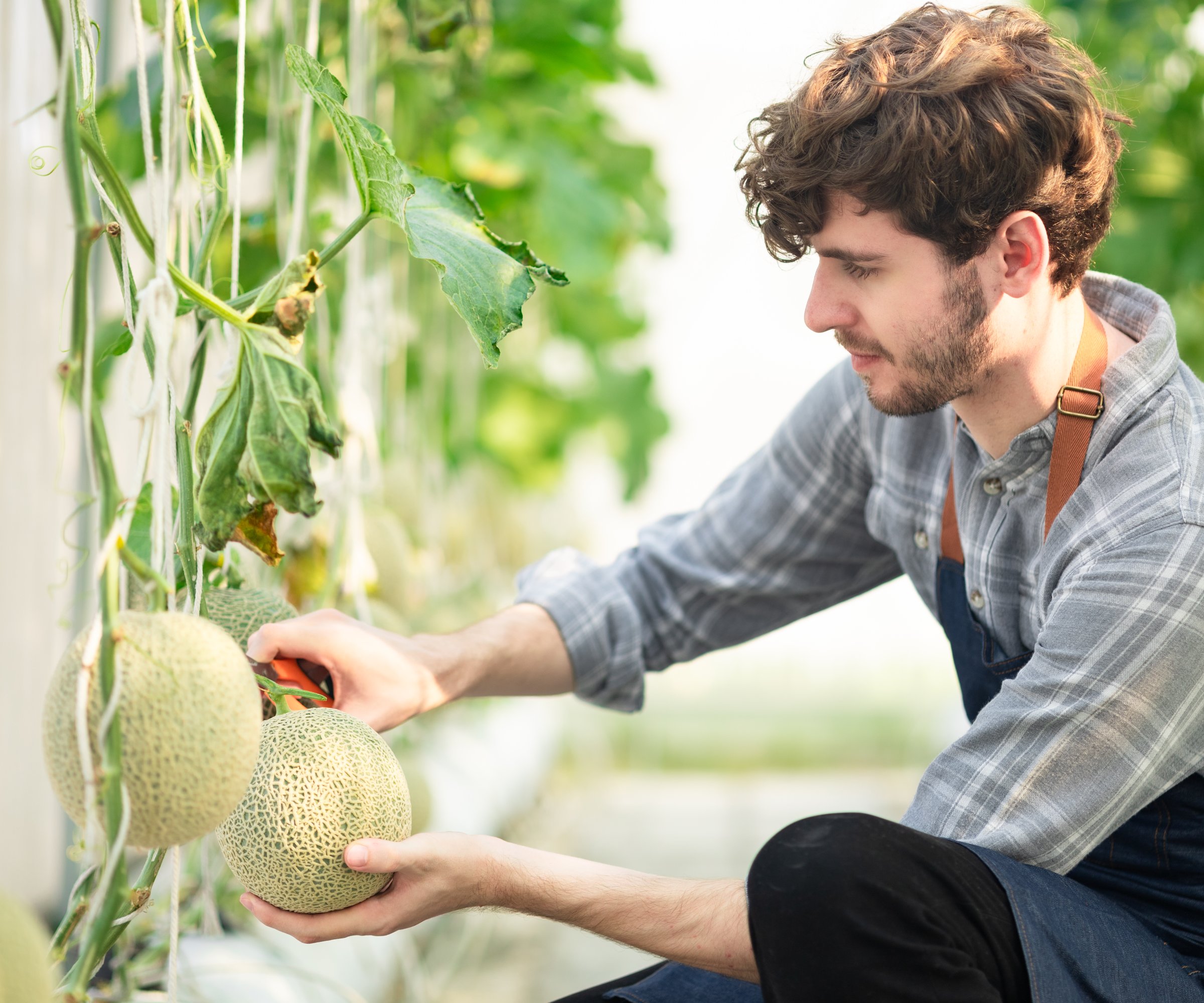How & When To Pick Cantaloupe For Perfectly Ripe Melons
Nothing's worse than an unripe cantaloupe. Make sure you harvest cantaloupe at the right time to get the very best out of this sweet melon.


Knowing when to pick cantaloupe is key to enjoying one of the tastiest treats of summer. Cantaloupe, with its musky undertones and sweet flesh, is wonderful on its own or paired in a salad with other fruits. Do you know how to tell if a cantaloupe is ripe? There are many wives' tales and tips, some of which work, and others of which aren’t worth printing. Learn how to pick a cantaloupe so you can enjoy a ripe melon with all the promise of the season.
When to Pick Cantaloupe

Learning when to pick cantaloupe will ensure the melon is deeply orange inside and the flesh is full of flavor. But when is cantaloupe ready to pick? Most cantaloupe varieties are ripening 80-90 days after seeding. This will all depend upon your zone, how warm your region gets, whether the plants are receiving enough light, and other factors. Another time marker is 35 days after the flowers have been pollinated.
Melons shipped for the market are not ripe, lest they go bad during shipping. They are harvested at “ half slip” or when the stem needs to be forcibly pulled from the fruit. They are not fully ripe but are mature enough for harvest. They generally need around 3 more days to ripen fully.
How to Tell If a Cantaloupe Is Ripe

When to harvest cantaloupe? The fruit is ready when it is “full slip” or when you can easily separate it from the stem. The flowering end, or the end opposite the stem, should be slightly soft when gently pressed. The skin should be fully netted in appearance and changed from green to yellowish brown. If you get your head down near the fruit, you will detect the signature musky smell. A really musky smelling melon is guaranteed to be delicious.
How to Pick a Cantaloupe

If you are not going to be consuming the melon within a couple of days, harvest it at half slip. The blossom end will have a bit of give but not much. The netting should be present but there might be hints of green peeking out from the yellowing skin. Use firm pressure with your thumb to detach the fruit.
If you want to pick it for immediate consumption, the blossom end should be soft and the fruit should practically fall off the vine when you handle it. Deep netting in the rind and golding up in the skin will be present, as well as the deep aroma of a ripe cantaloupe. You will need to exert little to no pressure to remove the melon.
Storing Cantaloupes After Harvest

Cantaloupe and most other melons should be stored at temperatures between 36-45 degrees Fahrenheit ( 2-7 C). Usually we store them in the refrigerator, but a root cellar will also suffice. You can store the melon in the fridge for up to 2 weeks. Place the melon in a bag to prevent the muskiness from affecting other foods.
Sign up for the Gardening Know How newsletter today and receive a free copy of our e-book "How to Grow Delicious Tomatoes".
An under ripe melon will need to sit on the counter for a couple of days to finish ripening. Once ripe they can go back in the refrigerator to chill or be eaten at room temperature, which intensifies the fruit’s flavor.
Frequently Asked Questions
Does cantaloupe ripen off the vine?
The food production industry realized they could ship cantaloupes to other regions that couldn’t produce the food. But to make the fruit shipping hardy, they had to develop melons that would ripen at least a bit off the vine. Cantaloupes and a few other melons have this ability. They still need to be picked when they are beginning to gold up. Fully green fruits will not ripen and achieve good flavor.
How long does it take for cantaloupe to grow?
Most seed packets advise 80-90 days after planting for harvest. Sweet Granite Organic is a variety that will be ready in as little as 70 days.
What if I pick my cantaloupe too early?
When a cantaloupe is picked green, it is not ready and will not ripen. The flesh will soften but the flavor won’t be there. Melons that are picked before the peak of ripeness may be left in a warm location ( at least 70 degrees F ( 21 C)) to finish developing.

Bonnie Grant is a professional landscaper with a Certification in Urban Gardening. She has been gardening and writing for 15 years. A former professional chef, she has a passion for edible landscaping.
- Geoffrey JohnsonContent Contributor and Seeds Expert
- Liz BaesslerSenior Editor